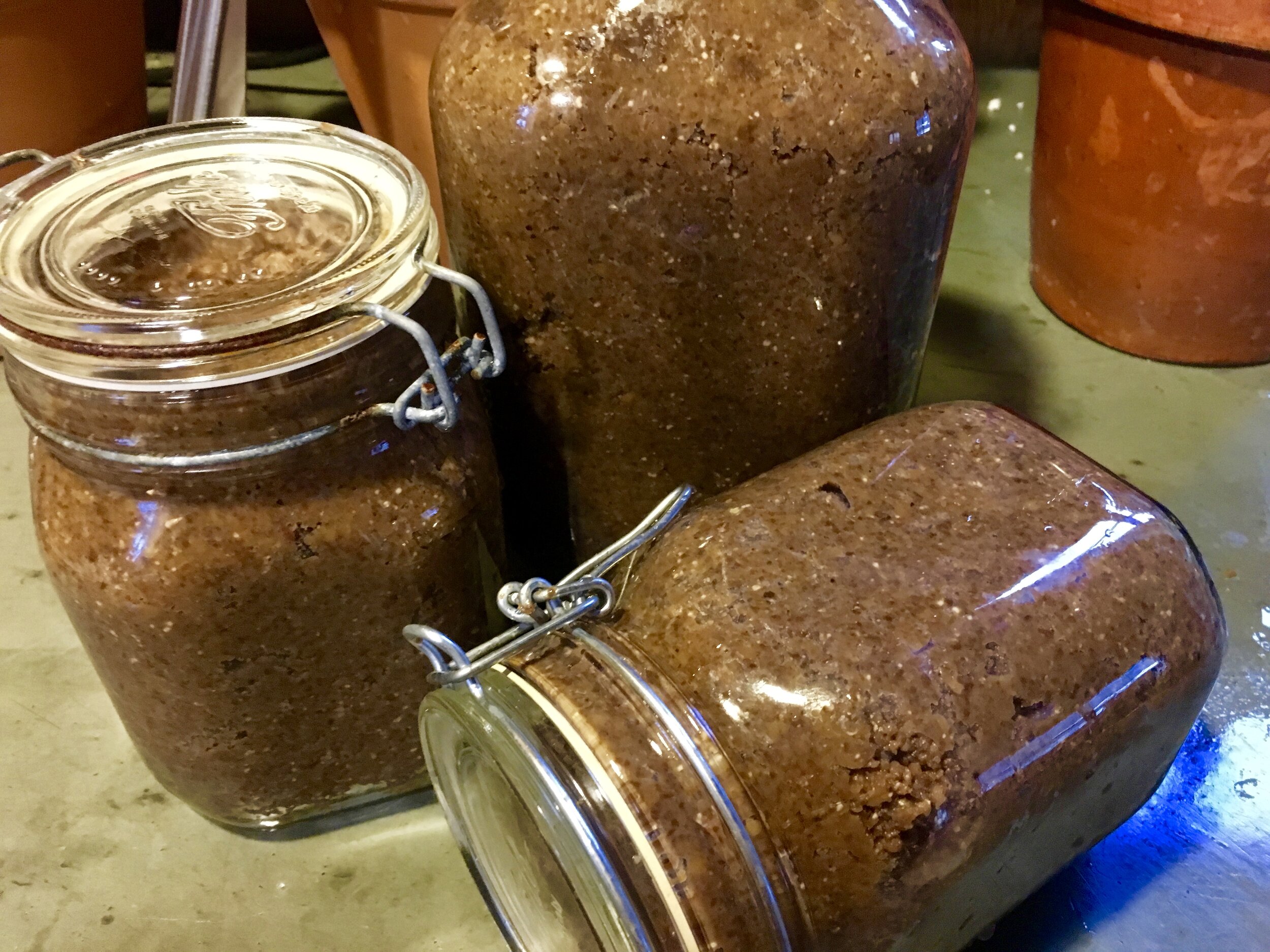Perennial Miso: Siberian Peashrub (Caragana Arborescens)
Could caragana arborescens be a functional "soybean" that grows on nitrogen-fixing shrubs? We've found that the compactness and intensity of the peas are best used in concentrated form as an umami-rich flavoring. We made several different kinds of miso--1 long-term rice koji plus peas, 1 short-term rice koji plus peas, and 1 long term korean wild fermented ganjang (using meju blocks). The peas have a somewhat funky, earthy-rich flavor which are perfect for miso, ganjang, and 'tamari'. We have also made Sichuan pixian paste fermented with the beans and red chilis. 8#s of peas went into this experiment, with 5#s in long term koji-miso, and 3#s in short term sweet koji miso. Made in 2017, we’re still using it in 2025.
We have since used caragana in other perennial soy sauces in combination with Kernza, a perennial wheat developed by the Land Institute. We also use it as an ingredient in mushroom tamaris and a wide range of other liquid aminos.
This shrub is used as a companion plant in many permaculture systems, since it fixes nitrogen and benefits from ‘chopping and dropping’—ie providing valuable mulch and nutrition to adjacent plants. The flowers are edible and delicious, and serve as a valuable source of food for pollinators. See the video at the bottom of this page to witness the amazing number of bumble bees hosted here.
Soybean Protein: 36%-56% Fat:18%
Caragana Protein: Up to 36% Fat: Approx 12%
Caragana miso
Finished miso is packed from a larger crock into the jars for long term storage and aging.
Grinding the miso…Cooked peas are combined with rice koji and salt. Here, we used organic brown rice koji from Rhapsody, a Vermont company. The mixture is ground in a meat grinder before being packed in a crock with a weight on top for aging.
Cooked siberian peas….It’s important to cook the peas in 2-3 changes of boiling water.
Harvesting before the peas shatter…It’s easiest and fastest to lay a tarp or sheet underneath the strub.
Korean-style wild miso: meju blocks….These are blocks of compressed, cooked, ground siberian peas which ferment for many months, then go into salt water for many months, then solids and liquid will be separated and then aged again. You can find instructions for how to make soy bean ganjang and doenjang using meju blocks on YouTube, specifically Maangchi’s station: How to make Korean fermented soybean paste (Doenjang: 된장) & soy sauce (Guk-ganjang: 국간장)
Dried meju: soy and siberian pea
Tamari is the liquid that gathers at the top of the compressed miso.
You can buy organic rice koji from Rhapsody Natural Foods here. I did one batch of long-term miso (more salt, less koji), and one batch of short-term miso (less salt, more koji—sweeter). Rhapsody koji comes with instructions. for making miso with soybeans, but you simply substitute the siberian peas for soybeans. I now make my own koji at the farm!
Other applications: Tempeh
Tempeh cultured in an elecampane leaf.
Soy+Siberian Peas










